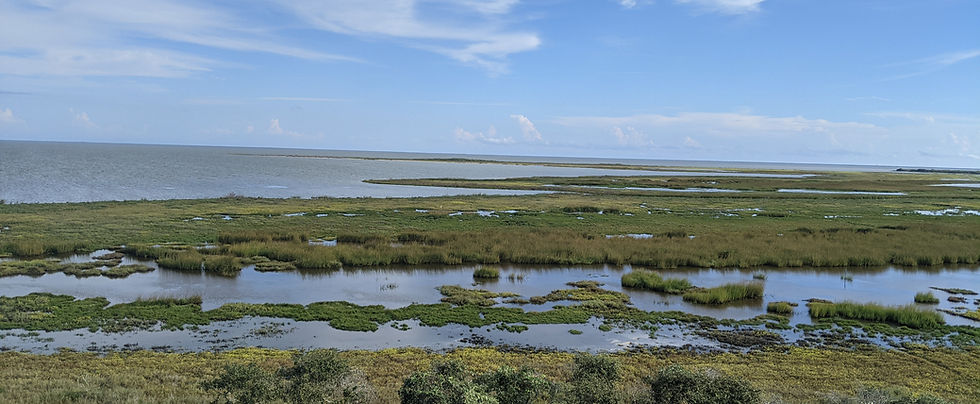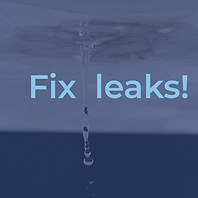Rogue Drinking Water Partnership
Somos un socio fundamental de la Asociación para el Agua Potable de Rogue (Rogue Drinking Water Partnership, RDWP), una asociación de colaboración de proveedores locales de agua potable y organizaciones centradas en la protección del agua potable y las fuentes de agua.

Esta asociación de colaboración tiene un objetivo principal:
proteger la calidad del agua potable para la comunidad de la cuenca del Rogue.
Estrategias
Source water protection is the wide variety of actions and activities aimed at safeguarding, maintaining, or improving the quality and/or quantity of sources of drinking water and their contributing areas. The Environmental Protection Agency (EPA) works with states, tribes, local utilities, and many other stakeholders to implement programs that maintain drinking water quality.
In practice, this includes activities like riparian restoration, developing emergency response plans, using best management practices in agriculture and forestry, and limiting certain activities in source water protection zones.
The National Water Quality Initiative (NWQI) is a United States Department of Agriculture (USDA) partnership that provides targeted funding for financial and technical assistance in small watersheds most in need and where farmers can use conservation practices to make a difference. Recently, the Natural Resource Conservation Service (NRCS) expanded the scope of NWQI to include source water protection, including both surface and groundwater public water systems, and is now a special component of NWQI. Conservation systems include practices that promote soil health, reduce erosion, and lessen nutrient runoff, such as filter strips, cover crops, reduced tillage and manure management.

Water Quality Threats
There are a wide array of things that affect our water quality. Following the industrial revolution in the late 19th century, the pollution entering our waterways began to increase dramatically. Although we have made progress since then, we still see water quality issues throughout the country. Water itself cannot remove pollutants, so we are either moving contaminants to another location or facing the consequences at the original site. Pollutants are commonly divided into two groups: point & nonpoint sources.


POINT SOURCE
Point-source pollutants originate from a single source, like a pipe, ditch, or vessel. These can be pin-pointed and regulated directly at the source.

NON-POINT SOURCE
Non-point source pollutants, on the other hand, can not be traced back to a single source. They often include runoff and other widespread sources that are more difficult to trace. Many of these pollutants are a result of land-use practices (like fertilizer or pesticide application).
Why is Water Quality Important?
Check out these common pollutants
Not only does it affect our health through the water we drink, but water quality also influences the wildlife and ecosystem around us. Many organisms require a certain level of clean water to find their prey, stay healthy, and live their lives. Keeping water clean is crucial for everyone, and source water protection is the best way to keep everyone safe and drinking water costs low. Would you want to be a fish swimming around in cloudy water?
Sediment
human activity &
erosion
Agriculture
Nitrates (fertilizer), pesticides/herbicides
Oil/Gas
Spills, improper disposal, direct discharge
Heavy Metals
arsenic, lead, cadmium, mercury
Pathogens
Bacteria, viruses, & parasites
∞ Chemicals
PFAS &
PCBs
Water quantity goes hand-in-hand with water quality!
Water stress is a growing problem in many regions of the world, including our home in Southern Oregon. Both groundwater quantity and quality is declining within the Rogue Basin. Decreasing groundwater recharge and an increasing rural population has caused a significant drop in the water table.
Additionally, over the last 20 years, the region is beginning to see a change in climatic conditions that is impacting water supply and water quality. Warmer temperatures, less snow and snowpack, and fewer overall precipitation events have led to repeated droughts, insufficient recharge of surface water reservoirs and groundwater aquifers, and increased frequency and intensity of wildfires.

In our basin, where is our source area?

The Rogue Drinking Water Providers Source Water Protection (SWP) project area encompasses 148,273 acres, starting at the Rogue River above Shady Cove and extending just upstream of the Gold Hill surface water intake. The Upper Rogue Watershed serves as the drinking water source for over 160,000 people in Jackson County, Oregon, with total withdrawals (from both surface and groundwater) equaling 39.04 million gallons per day (Mgal/d) (USGS, 2015). Potential water quality concerns related to local wildfires (Almeda and South Obenchain Fires) in the last few years were elevated levels of aluminum (Al), perfluorinated compounds (PFAS; used for fire suppression), total phosphorus (TP), total organic carbon (TOC), turbidity, and volatile and semi-volatile organic compounds (VOC and SVOC). In the absence of healthy root systems to keep soils in place, these contaminants wash into waterways adjacent to burn areas.
How is RDWP protecting our water?

Restoration projects, like this one on Little Butte Creek can look a bit jarring at first. Like any construction project, it can be a little messy as the system recovers. In this case, we made room for native plants to emerge from the seedbank and placed multiple large wood structures to stabilize the banks– increasing habitat availability!
The Little Butte Creek watershed has the most stream miles within the protection area, and is a targeted watershed for restoration by RRWC. In a recent ecological restoration project near Lake Creek, a historic side channel was reconnected, offering additional high-quality rearing habitat for juvenile Coho Salmon (listed as threatened under the Endangered Species Act). The amount of water from the flow restoration that will remain in the creek instead of being withdrawn for irrigation will provide critical cold water during the hot summer months.

Jackson Soil and Water Conservation District (JSWCD) has been working extensively with agricultural landowners in the Little Butte Creek watershed to improve the agricultural impacts on water quality in this area. To this end, JSWCD has worked with landowners to improve or modernize their irrigation systems to eliminate agricultural runoff, develop grazing management plans to improve upland landscape health, and restore riparian areas. These restoration efforts include controlling noxious weeds, re-establishing native vegetation, and installing fencing to provide healthy stream buffers and limit the amount of time livestock spend directly in creeks.
How do drinking water providers treat contaminants?

While our water sources in the Rogue River watershed are of excellent quality, both receive at least a minimal level of treatment as required by the EPA to protect its high quality all the way to your tap. Let’s take a look at how Medford Water Commission, the largest water provider in the area, oversees water quality and necessary treatment.
Big Butte Springs is an exceptionally high-quality groundwater source that requires no filtration or treatment other than disinfection per EPA drinking water standards, to ensure it remains high quality throughout our distribution system and all the way to residents, according to Medford Water Commission. This is accomplished with on-site chlorination at a state-of the-art treatment facility; spring flows are collected underground and never see the light of day until emerging from customers’ taps.
The Rogue River, used only during peak-demand months (generally throughout the summer), is also considered high-quality, but as a surface water source is subject to a much more extensive treatment process to meet drinking water standards. It receives full conventional treatment at the Robert A. Duff Water Treatment Plant, which consists of coagulation, settling, and filtration, followed by disinfection. In addition, the water treatment process involves adding carbon dioxide (CO2) to adjust the pH level and exposing the water to ozone (O3), a form of oxygen, that helps kill germs and eliminate taste and odors.
If Our Water Sources Are of Such High Quality, Why Do They Need to Be Disinfected?
"Drinking water must be disinfected to treat disease-causing microbial pathogens (e.g., bacteria, viruses, protozoa, parasites). Chlorine, in the form of sodium hypochlorite, is used as a disinfectant in our treatment process; we are required to maintain a residual amount in the water to provide continuous protection from microbial contamination as it travels through our distribution system to your tap. Sampling throughout the system confirms that the amount of chlorine present is neither too low nor too high per the limits set by the EPA. Our water is effectively disinfected with much less chlorine than the allowable limit."


Our Neighboring Basin...
Since 2001, Klamath Basin agribusiness — which consumes over 90 percent of developed basin water supplies — has been restricted from diverting unsustainable amounts of surface water to protect endangered wildlife and Native American water rights. The Klamath Basin water crisis is a warning of what’s to come elsewhere in rural Oregon if we don’t change course. In the summer of 2021, the Klamath saw hundreds of domestic wells run dry, driven as much by policy as by drought. Overextraction and irresponsible water use are critical issues in Southern Oregon that we should be working together to solve. The increasing frequency and duration of droughts give aquifers a limited chance to recharge, and it takes time for the resource to recover. This problem isn’t going away, and we all need to be involved in finding solutions.
What can YOU do?
We all want the same thing. Clean, safe drinking water. At the same time, we want to make sure that agriculture and other water users are sustainable in their activities. As an individual, there are several things you can do to help alleviate water quality and quantity concerns.




















